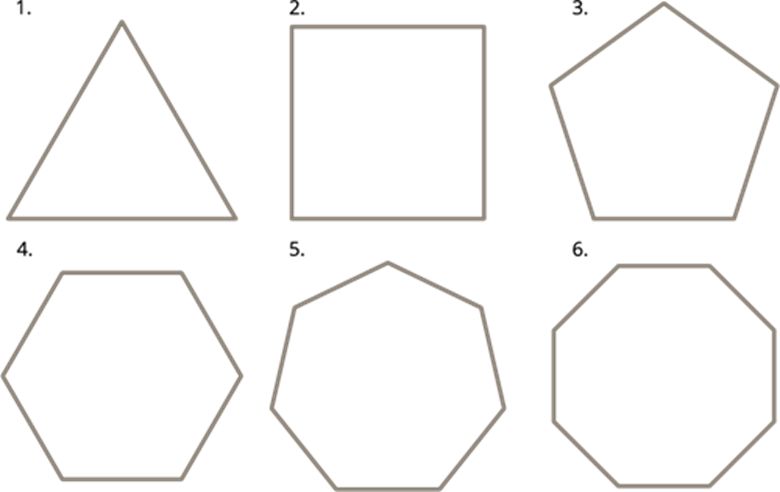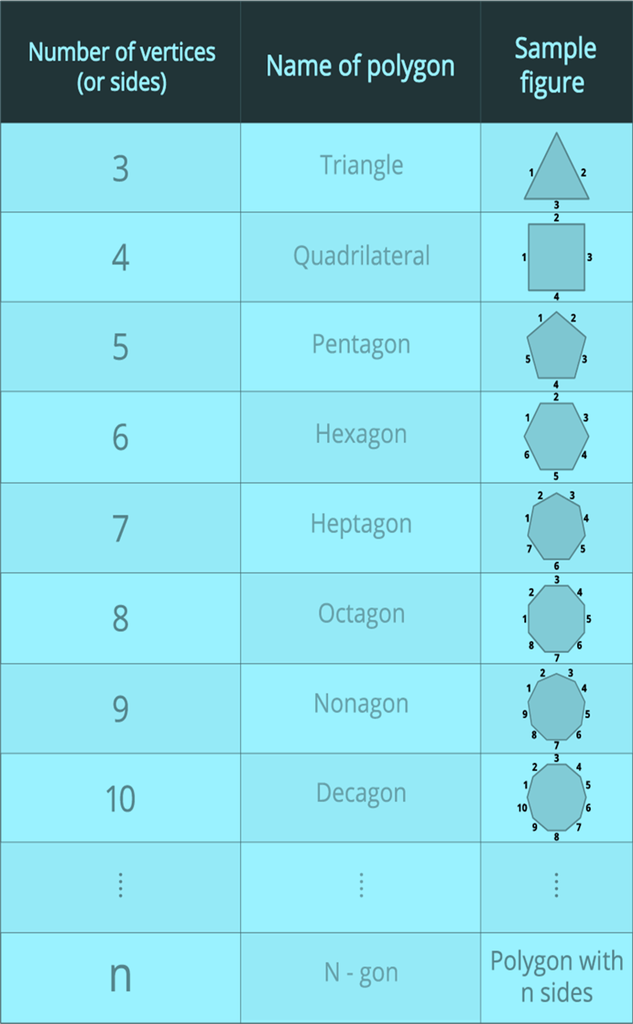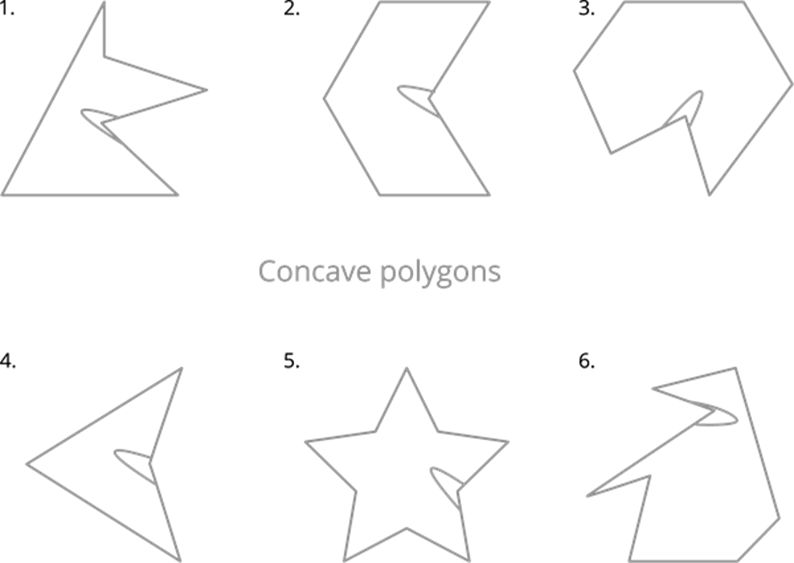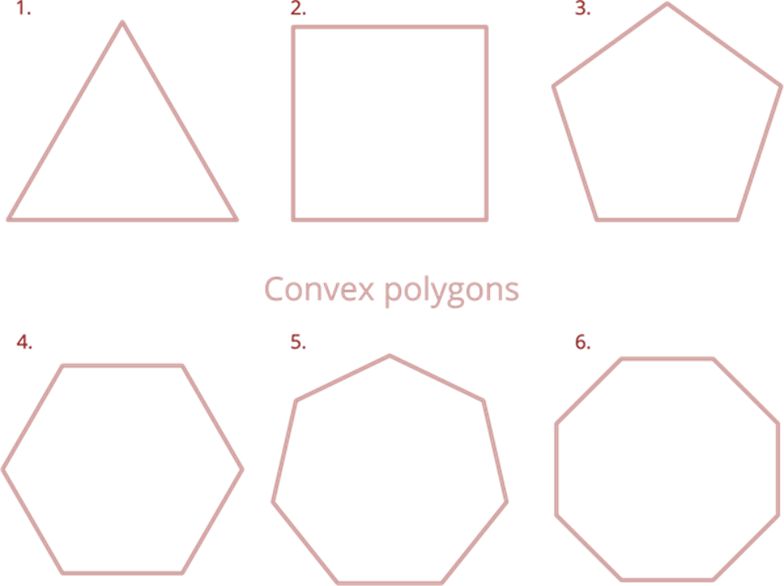- Books Name
- class 8 th Mathematics Book
- Publication
- ReginaTagebücher
- Course
- CBSE Class 8
- Subject
- Mathmatics
Understanding Quadrilaterals
Polygons and its types
Nature of polygon,
Line and Line segments: A line segment is the shortest distance between two points. The line segment joining points A and B denoted by AB¯¯¯¯¯.

A line can be obtained from a line segment like AB←→ is extended on both sides indefinitely.
Polygon is made up of line segments. Triangle is the smallest polygon made up of three line segments, a quadrilateral is a polygon made up of four line segments, a pentagon is made up of five line segments and so on.

all six figures are polygons.
Classification of polygon
Polygons are classified according to the number of sides (or vertices) as follows:

Concave and convex polygon: If each of the interior angles of a polygon is less than 180°, then it is called a convex polygon. If at least one angle of a polygon is more than 180°, then it is called a concave polygon.

each of the interior angles is less than 180°. So they are called convex polygons.

Regular and irregular polygon: A regular polygon is a polygon whose all sides and all angles are equal. Thus, a regular polygon is both equiangular and equilateral.

In the above polygons, each of the sides and angles is equal. So they are regular polygons.
If at least one side measures are different and at least one angle measures are different when compared to others. So they are irregular polygons.

Diagonals of a polygon
Adjacent vertices: The end-points of the same side of a polygon are called the adjacent vertices.
Adjacent sides: Sides of a polygon that have a common vertex are called adjacent sides. If the sides of a polygon don't have any common vertex is called non-adjacent sides.
Diagonals: The line segments obtained by joining vertices which are not adjacent are called the diagonals of a polygon.
The number of diagonals of a convex polygon: If there are n-sides in a convex polygon and n>3, then it has ![]() diagonals. A triangle has no diagonals.
diagonals. A triangle has no diagonals.


 ReginaTagebücher
ReginaTagebücher
